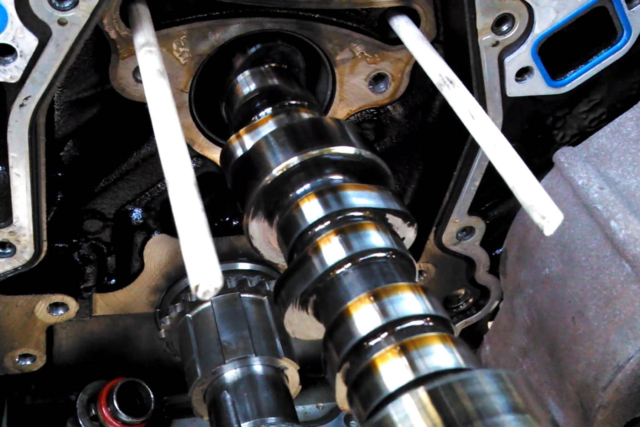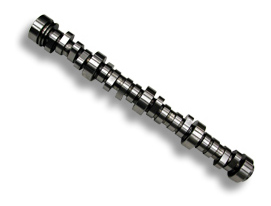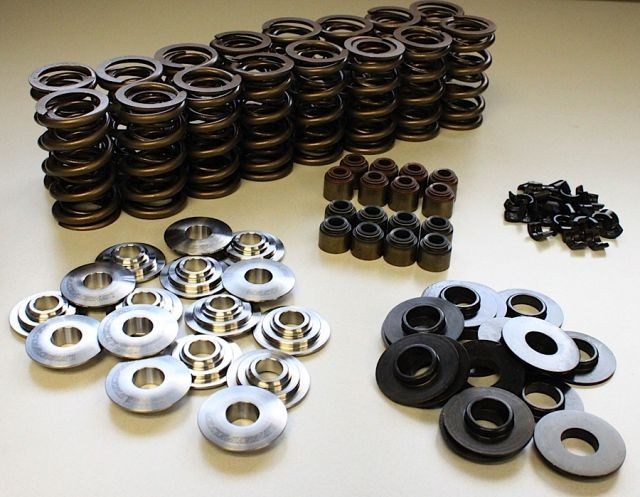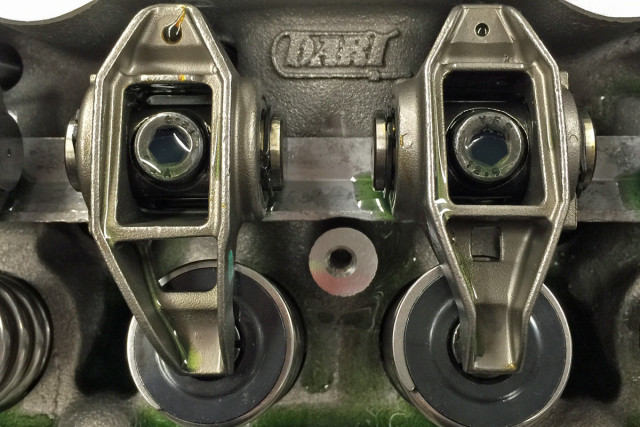 When talking upgrades for LS platform engines we commonly hear of enthusiasts mix-matching stock GM components from various LS engines. It’s common for the budget conscious gearhead to source a high performance OEM LS camshaft to increase the power output of their LS powered vehicle. The cast iron 5.3 truck engine is a great example. Ditching the stock cam in favor of a hotter, compatible OE GM cam not only saves money, it also improves performance. Several of these OE cams have the ability to multiply power output significantly. This article isn’t an all-inclusive guide, rather it’s a quick look at some of the more popular camshaft upgrades for the LS engines.
When talking upgrades for LS platform engines we commonly hear of enthusiasts mix-matching stock GM components from various LS engines. It’s common for the budget conscious gearhead to source a high performance OEM LS camshaft to increase the power output of their LS powered vehicle. The cast iron 5.3 truck engine is a great example. Ditching the stock cam in favor of a hotter, compatible OE GM cam not only saves money, it also improves performance. Several of these OE cams have the ability to multiply power output significantly. This article isn’t an all-inclusive guide, rather it’s a quick look at some of the more popular camshaft upgrades for the LS engines.

The LQ9 is an extremely popular junkyard engine swap. What OEM GM cam would work best in this application?

This is the GM LS9 cam which is popular for boosted applications. It is used in Lingenfelter’s supercharger kits and is often recommended for turbocharged platforms as well. Image via Lingenfelter
Depending on the application, you want a camshaft that is going to meet the needs of your vehicle. Whether this is a LR4 swapped 240sx drift car or for your LS1 powered drag Mustang. It is important to study the characteristics of the stock GM cams and select the appropriate one to satisfy the needs of your application. We are going to examine four of the most commonly swapped cams options from GM. The chosen camshafts are from a LS2, LS3, LS6, and the LS9. Any of these can be purchased new or used on the internet or via your local GM dealer.
Before sourcing the sought after cam, there are a few considerations that need to take place. Depending on the engine you’re starting with the stock valvetrain may an upgrade to handle the extra stress associated with a higher lift cam and increased RPM limits. A common solution is to upgrade to beehive valve springs or convert to a dual-spring setup. With higher spring pressures and/or stiffer pushrods. You’ll also need to make sure the engine’s rocker arms will take the abuse.

Lingenfelter dual-spring and lightweight retainers for LSx applications – permitting the use of higher lift camshafts. Reducing the likelihood of valve float and keeping valve spring frequencies in check. Image via Lingenfelter
Roller rockers are an upgrade worth considering, but not always a requirement. With a stock cam upgrade, the original cast steel rockers will do the job in most street applications. A cheaper performance option is to upgrade the stock rockers’ trunion bearing (fulcrum) to a needle and caged bearing set, avoiding the potential bearing failure that often occurs at higher RPM.
Some other considerations that need to take place are where the cam sensor mounts and the number of bolts the cam requires for installation. Also the cam sensor pickup or signal generating marks on the cam gear. The LS2 uses a cam sensor mounted in the front and a single-bolt, while the LSA and LS3 also have a single-bolt but, require a front cover to accept the cam sensor. The LS9 cam uses a three-bolt design, which can be converted for use in a single-bolt setup utilizing an aftermarket conversion kit (i.e. Lingenfelter). The early LS1 and LS6 engines use a rear mount cam sensor and employ a three-bolt design. This does not mean they cannot be used or interchanged however having knowing what you have and what you’ll need when gathering parts for the cam swap will save time and frustration during the actual modifications. Using a standalone EFI system, such as the Holley Dominator EFI system, permits the use of no cam sensor.
Here are the specifications of the aforementioned camshafts, in no particular order:
 Almost all of the cam grinds will work well in naturally aspirated or boosted applications, but some perform better than others in specific applications. The LS9 cam thrives in boosted applications; evident from the higher exhaust lift and increased LSA or smaller overlap. This makes sense, being that the LS9 engine is supercharged from the factory, used for the ZR1 Corvette. Lingenfelter began using this cam in its boosted applications because it proved to be superior to the company’s own GT7 cam that was previously included in its supercharger kits.
Almost all of the cam grinds will work well in naturally aspirated or boosted applications, but some perform better than others in specific applications. The LS9 cam thrives in boosted applications; evident from the higher exhaust lift and increased LSA or smaller overlap. This makes sense, being that the LS9 engine is supercharged from the factory, used for the ZR1 Corvette. Lingenfelter began using this cam in its boosted applications because it proved to be superior to the company’s own GT7 cam that was previously included in its supercharger kits.
Naturally Aspirated or Boosted?
Timing Gear
The OEM cam gears vary in tooth count, bolt pattern, and sensor pickup. A – Single bolt 4X camshaft gear 2007-2014 LS2 or LS3 engine. GM PN 12591689. B – Three bolt 4X camshaft gear, 2006 LS2 Corvette or from a 2006-2009 LS7 Corvette engine. GM PN12586481. C – Three bolt 1X camshaft gear 2005 LS2 Corvette or a 2005-2006 LS2 GTO/SSR/Trailblazer engine. GM PN 12576407. D – Three bolt camshaft gear, 1997-2004 LS1, LS6 or other Gen III V8 engines. No reluctor teeth are on the timing chain gear since the camshaft position sensor is at the back of the block GM PN 12552953. Image and information via Lingenfelter
No matter the application, GM provides an excellent selection of stock cams for your street or track build. We’ve only scratched the surface of OEM cam swaps and their potential. This article serves as a basic guide. When choosing a cam for your application, stock or aftermarket, it is pertinent to choose an appropriate cam. If you’re uncertain about the selection many cam manufacturers offer a tech line where they can provide guidance in selecting the right camshaft for your application based on what they manufacture.
So, the next time your buddy tells you that you need to swap a LS7 cam into your LQ9, you’ll know what he’s talking about and why it might just be a good idea.



















